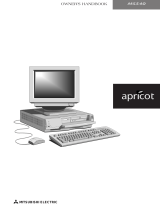Table of Contents
1. Introduction................................................................................................. 4
Overview........................................................................................... 4
Icons................................................................................................. 5
Hardware Specifications/Features................................................ 5
Software Specifications.................................................................. 7
Technical Support........................................................................... 7
Returning Merchandise for Service............................................. 8
2. Board Installation..................................................................................... 10
Unpacking....................................................................................... 10
Installation...................................................................................... 10
Quick Reference for Jumpers........................................................ 12
Map of Motherboard Jumpers..................................................... 13
Clear CMOS & Reset Password .................................................. 17
Soft Power Connector.................................................................... 17
Hardware Reset Switch Connector Installation......................... 18
Ensoniq Audio Connectors ......................................................... 18
External SMI.................................................................................... 18
Chassis Intrusion Alarm Connector............................................ 18
CMOS RTC...................................................................................... 18
Flash EEPROM............................................................................... 18
Mounting the Motherboard in the Chassis .............................. 19
Installing Memory.......................................................................... 19
Cache Memory................................................................................ 23
Installing the CPU and Cooling Fan........................................... 23
Connecting IDE and Floppy Drives............................................. 24
Connecting the Power Supply...................................................... 27
Installing Add on Cards ............................................................... 28
Connecting PS/2, USB, Serial and Parallel Devices.............. 28
Frequently Asked Questions....................................................... 30
3. BIOS Configuration................................................................................. 32
Main Setup Menu.......................................................................... 35
BIOS Features Setup...................................................................... 40
Chipset Features Setup................................................................. 45
Power Management Setup............................................................ 48
PnP / PCI Configuration................................................................ 53
Integrate Peripherals...................................................................... 56




















